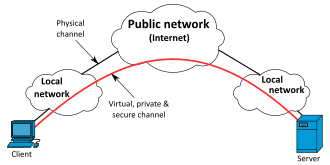Until recently many companies were reluctant to encourage, or allow, people to work remotely. This may be partly due to a lack of experience managing projects with remote workers. It also may be partly due to a unfounded concern that since remote workers do not sit at a desk that can be seen by management, remote workers may not be as productive as people in the office.

This article is written from the perspective of software and hardware engineering. The concepts may be useful for many other types of projects and remote work.
Recommendations for Management of Remote Teams
- Break a project into multiple tasks that can be accomplished in a short timeframe, such as days or weeks.
- Obtain a commitment from the person and/or team that each task can be accomplished within the specified timeframe. Imposing an unreasonable timeframe for a task will often result in schedule delays and mutual mistrust.
- Review task status daily in video conference calls where documents and desktops can be displayed, and make task and schedule changes if required. Do not record video (or audio) calls unless all participants agree.
- Measure status and results with a tool that all team members and management can access. There are several excellent tools for project management where tasks and results can be tracked (e.g. https://basecamp.com and https://www.atlassian.com/software/jira).
- Schedule daily video conference status calls at a time where all team members can participate.
- Only enforce rigid work hours for mandatory daily video status calls unless a remote worker provides customer service or technical support during specified hours. Many experienced remote workers have higher productivity working non-standard hours when their concentration is best.
- When a project includes software development, use a commercial software repository (e.g. https://github.com) or a company private software repository (e.g. https://about.gitlab.com).
- There are many excellent commercial video conferencing systems available (https://www.techradar.com/best/best-video-conferencing-software).
- If you wish to implement a company private video conferencing system that runs on your computers in your company data center, one open source option that is based upon WebRTC is https://openvidu.io.
OTTStreamingVideo is an expert in building proprietary video conferencing systems on Linux servers. Please contact us for more information.
Secure Networking
There are many high quality secure networking products available for remote working (https://www.pcmag.com/picks/the-best-vpn-routers).
For exampe, the Sabai Technology Asus AC3200 WiFi router allows specific devices on a remote worker’s subnet to route through OpenVPN to your company network. This means that the remote work computer can always be connected via VPN and the non-work related devices (e.g. televisions and other personal devices) will not be routed through your company network.
Computer Remote Access
There are many commercial full-featured computer remote access products available (https://www.pcmag.com/picks/the-best-remote-access-software) in addition to the Windows built-in Remote Desktop.
For Linux computers, including small embedded Linux processors such as the Raspberry Pi, VNC provide remote access. Desktop access can be combined with SSH tunnels for the required ports to enable both remote control and remote software development.
OTTStreamingVideo is expert in Linux remote control, software development, and automated sofware updating for both webservers and embedded Linux applications. Please contact us for more information.